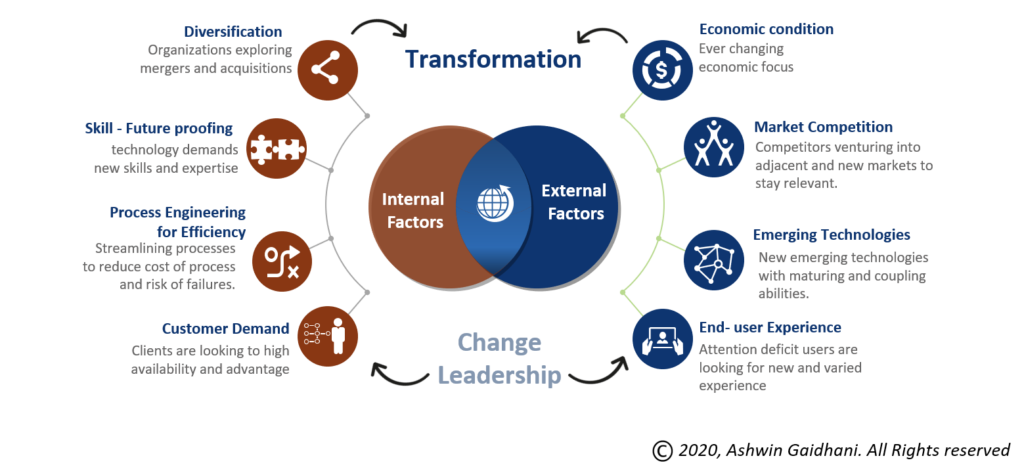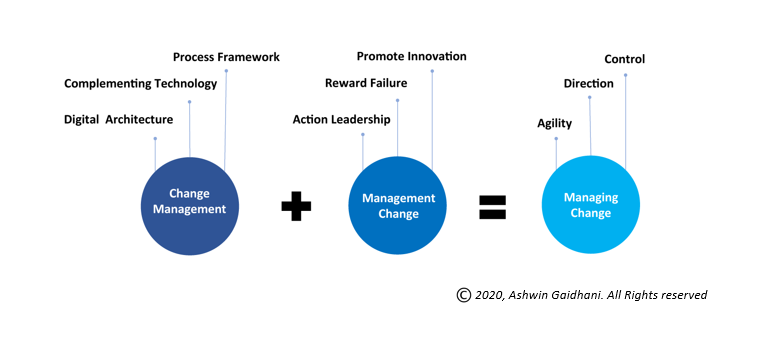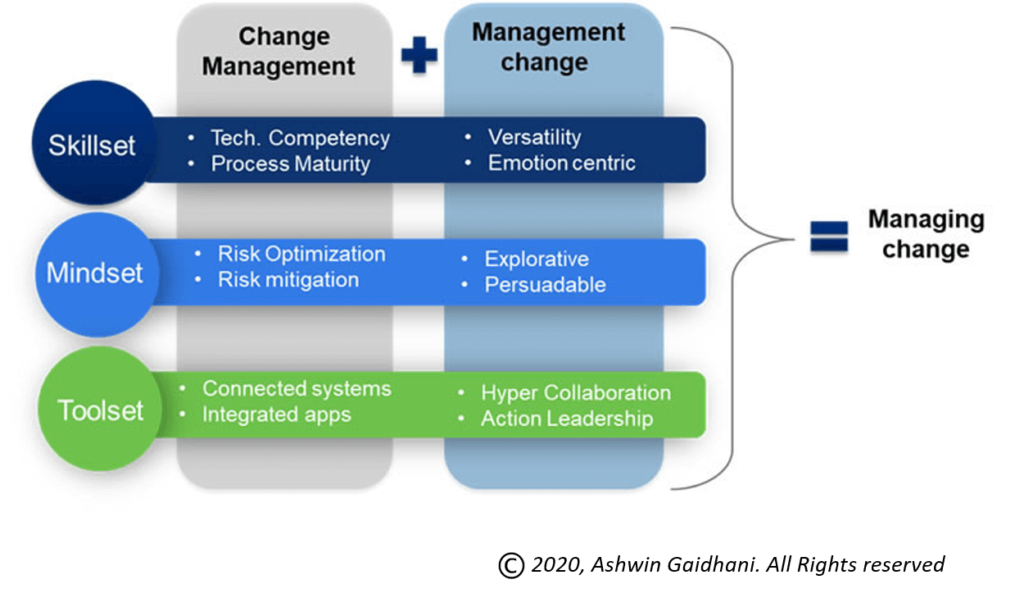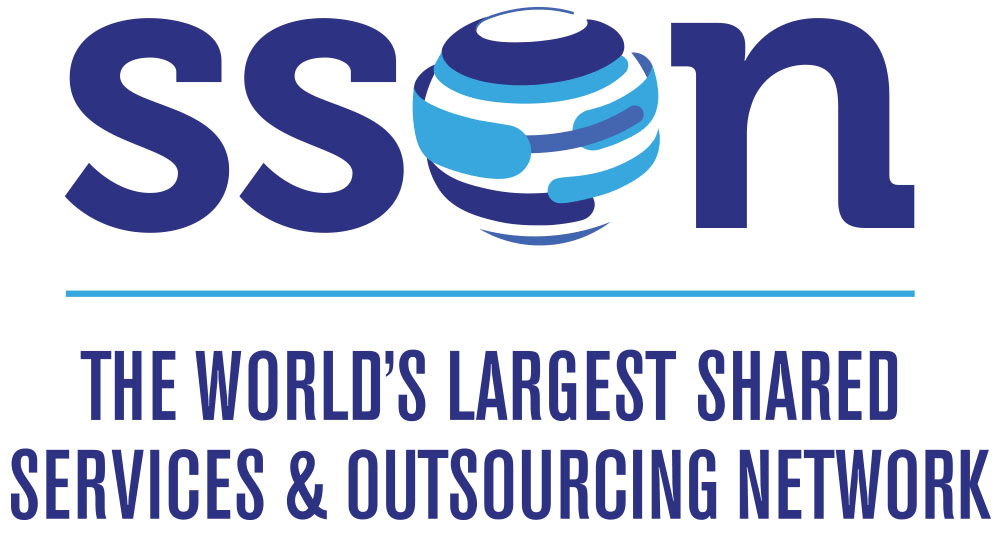
Comprehensive Change Management….the Pedestal to Transformation
This article is Published on SSON.
Entities transform over time, supported by concepts, frameworks, methodologies, and technology. Transformation is a self-initiating continuous process that redesigns an entire persona of core businesses – an inevitable consequence of external and internal factors.

Presently, markets and customers are growing anxious, giving enterprises less time to organize business models and products. Change is infusing at every juncture of the man-machine-method interconnection.
New skillsets and abilities must handle such rapid changes to avoid transformation initiatives getting into an infinite loop of re-engineering vs. improvement (a different conversation Altogether).

Change Management is all about execution and the art of initiating deliberate change. There is substantial effort invested in simplifying the processes, and a constant shift is underway to delegate tasks to systems that mimic human actions and human-like thinking capabilities. Integrating systems and processes at every possible opportunity will increase transparency and enhance the authenticity of activities. Emerging technologies like Blockchain can find numerous applications in our own environments. We have transferred the risk of human error to the tools/systems, but there is still a need for constant caution.
The management change is about the leadership models and organizational structures we build to manage the work concept, including people, performance, and results/outcomes. Here, all the attributes are exclusively relational to circumstances and conditions, especially for management leaders. Management should empower resources to think, not just act, and execute. Aptitudes of a services leader, delivery leader, product leader, and research leader vary fundamentally, based on defined objectives and time spent in that role. (For example, we cannot swap the inherent qualities of a product manager with a project manager.)
Managing change is where the transformation initiatives are of a larger magnitude, touching almost every team, technique, and technology in the ecosystem. The leaders with such crucial responsibility should balance the emotional and technical facets. What matters is building a culture and nurturing our workforce. The idea is not to make resources job-ready or success-ready but future-ready, which will make them more compatible with the new environment. “Data” will show the direction, and “skill” is how we will achieve the objective. This dimension of transformation will propel services, products, processes, partnership, and the way the organization is perceived, forward.

Data is key. The first step is to deconstruct the silos between the departments and identify the data pools that are home to the historical information that holds valuable predictions for the present and future. Start identifying existing data sources and then create new data models by connecting adjacent data points in any permutation and combination. There is no such thing as “useless data” or “worthless data.” Any data is useful until we have connected it with the right source and target. That is causing some anxiety.
Skill is about focussing on building capabilities and elevating competencies to operate around the new-age technologies and the behavioral and leadership attributes. For instance, networking is one perceived skill out of many. Encouraging teams to participate in technology and analyst-led events/conferences will increase the thought horizon. That is where organizations can see industry trends, build future customers, and identify service providers and technology integrators.
Managing change for a Digital leader is similar to playing the role of a conductor masterminding the hierarchy of needs in a symphony orchestra: managing time, participation, and intensity without compromising emotion, perfection, and satisfaction. In unison, that drives an excellent outcome.




Leave a Reply
You must be logged in to post a comment.